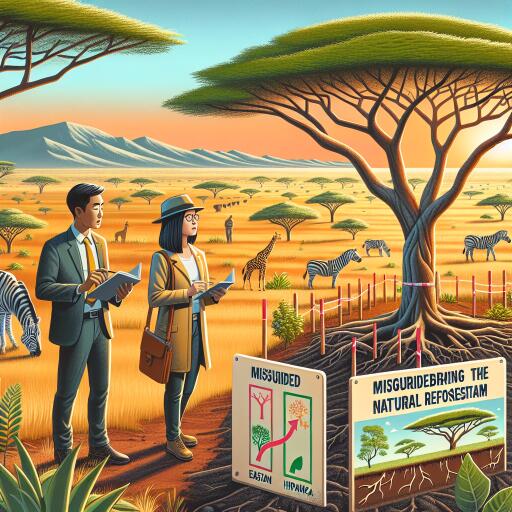
Misguided Reforestation Schemes Threaten African Savannah
In the sprawling landscapes of Africa, an area as vast as France is currently facing an ecological threat, but perhaps not from the quarter you’d assume. Unlike the oft-discussed dangers of deforestation or climate change, this time, the peril comes dressed as a solution—reforestation. While reforestation is widely acknowledged and celebrated as a critical step towards ecological recovery and balance, a new study sheds light on the complexities and unintended consequences of such initiatives, especially when misapplied across the diverse African terrain.
At the heart of the debate is the critical misunderstanding and misclassification of non-forest ecosystems, such as savannas and grasslands, as areas in need of reforesting. Savannas and grasslands are ecosystems with their own unique and delicate balances, supporting a wide array of wildlife, including species such as rhinos and wildebeest, and providing livelihoods for many communities. The recent study scrutinized the allocation of land for reforestation projects, discovering a distressing trend where these non-forest systems are earmarked for tree planting initiatives.
The push for reforestation across Africa is driven by the noble goal of ecosystem restoration. However, this laudable objective is being undermined by a fundamental misunderstanding of what restoration should entail for different ecosystems. By blanket-applying tree planting strategies across diverse landscapes, many of which evolved and thrived without dense tree cover, these schemes risk altering, or even damaging, the very ecosystems they aim to save.
Experts warn of the ecological and social ramifications of such misguided reforestation efforts. For the wildlife that has adapted to the open landscapes of savannas and grasslands, increased tree cover can disrupt their habitats and food sources. For the people who depend on these ecosystems for grazing livestock, agriculture, and cultural practices, the imposition of forested landscapes represents a direct threat to their way of life and economic sustainability.
Moreover, the study emphasizes that the consequences of such misdirected restoration efforts extend beyond African borders, with other non-forest areas around the globe, such as the open landscapes of India and Brazil, also at risk. The urgency to combat climate change through carbon sequestration has led to a rush in funding large-scale tree planting projects. However, without proper assessment and understanding of the local ecosystems, these projects could have negligible, if not negative, impacts on carbon sequestration, biodiversity, and the communities that have lived in harmony with these landscapes for generations.
The call to action from this research is clear: restoration and reforestation need to be context-specific, recognizing and respecting the ecological and cultural diversity of the landscapes in question. It’s not simply a matter of planting trees, but of nurturing ecosystems in their entirety, ensuring that restoration efforts support the ecological functions, species diversity, and human communities that depend on them. As the study suggests, there is still time to adjust reforestation strategies to avoid these unintended consequences, but it requires a willing acknowledgment of the complexity of natural systems and a commitment to truly understanding them before attempting to intervene.
In conclusion, as the globe rallies to restore and protect our planet’s invaluable ecosystems, the situation unfolding across Africa serves as a poignant reminder of the necessity for nuanced, informed, and sensitive approaches to environmental restoration. Misguided reforestation schemes, while stemming from a place of environmental concern, underscore the need for a deeper engagement with ecological realities and a departure from one-size-fits-all solutions. Only through tailored approaches that honor the integrity of each ecosystem can true restoration be achieved, safeguarding the biodiversity and communities that make our planet uniquely vibrant.





Leave a Reply